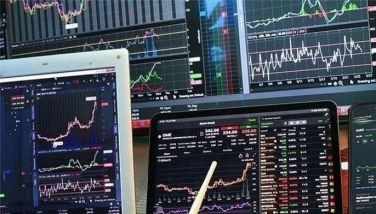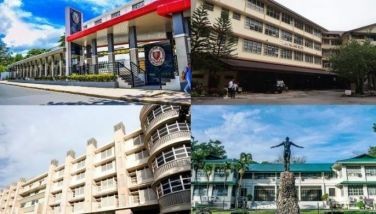Tough ASEAN and international competition in Philippine home market for consumer and industrial goods

The other day, I went to an appliance retailer to purchase a household durable. Being post-Christmas, customers were sparse. Sellers were only too willing to answer any questions to win a customer.
I therefore made a survey and moved around the store to know where the goods being sold were assembled or manufactured. (Readers who expect a continuation of my comments on the high skills need of government will have to wait for later columns.)
“Domestic and foreign industry, through a shop view.†Household appliances these days are dominantly branded Japanese, Korean and Taiwanese-branded products. Some are still American or European.
These appliances are made and assembled in different countries in the East Asian region. As labor costs in Japan, Korea and Taiwan rose, their factories moved to other countries, many of them in Southeast Asia and to China.
“Household appliances and consumer electronics.†Different brands of air-conditioners, refrigerators, and washing machines being sold are therefore imported, except for the few assembled in the country.
Best-selling refrigerators come from China, Thailand, Indonesia, Korea, and even Vietnam, the latecomer. Electric fans – the simplest of the gadgets – are from the same countries, but we have brands assembled in the Philippines. Air-conditioners are dominantly assembled in the same countries, a few brands assembled in the Philippines.
Audio visual electronic gadgets – TVs, audio-visual sets – are from Malaysia, Thailand, China, Taiwan and Korea. There is hardly any Philippine presence in this class of products. Simpler gadgets such as radios, microwave ovens, blenders are also assembled from foreign countries. Most of the brands of consumer electronics were assembled or made in Thailand or Malaysia , aside from China, Taiwan and Korea.
Computers, cellphones and all kinds of microchip goods have their production based predominantly in East Asia. Thailand, Malaysia, Indonesia and Vietnam have come into their own, assembling appliances through FDIs that have located to them.
Philippine contribution is the assembly of microchips into semiconductor designs used for different types of appliances, big and tiny. But we don’t see our output in the appliance brands that use them for they are parts of these machines.
“Consumer goods galore.†We widen the survey and cover what we see in the department stores and boutiques in malls, in the major groceries, and in the large superstores for hardware goods.
Here, the goods made by other ASEAN countries – in particular, those from Thailand, Malaysia, Indonesia, Vietnam – are everywhere to be found. High end consumer items come from high income industrial countries. The inexpensive items are invariably made in the emergent new ASEAN countries and China.
This imprint is in garments and textiles, shoes, travel goods, furnishings, kitchen wares, office supplies, paper and stationery. The most inexpensive items come from China, Southeast Asia. And the more expensive of these come from Japan, Korea, Taiwan and from Europe and the United States.
In big grocery stores, there is a wide array of processed foods imported from the same countries. In particular, Thailand has an impressive array of goods with Malaysia and Indonesia a little behind. China’s products are ever present and affordable. Higher cost consumer goods are sourced mainly from United States, Australia and other European countries, although the ASEAN countries have an obvious presence in the market.
In consumer goods, Philippine products should be dominant but they are not! Where Philippine brands appear to be well represented, products made in other ASEAN countries sometime appear even cheaper. The same comment goes to home building products. Construction materials made in Malaysia, Thailand, and Indonesia have found their way in these shops, offering very competitive prices.
“A free trade area means tough competition for producers at home.†In the country today, there is wide room for choice of brands and style of goods on sale. The stores are stocked up with a wide variety of goods and quality. These involve foreign-made and locally fabricated goods.
There is another way of saying this. The domestic consumer, compared to the past, has much wider freedom of choice in the goods to buy, both in terms of quality and price. It used to be that the government gave only the producers the leeway on what consumers at home could buy.
Then through actions undertaken by the country on the international front, it was able to change the relationship between producers and consumers in the domestic economy. The formerly downtrodden consumer, who have felt the bad effects of industrial protection policy through high prices and the scarcity of consumer goods, began to feel the balance restored in their favor.
Two milestone events forced the Philippine economy to change course and rebalance these benefits among consumers and producers.
The first was the decision to become part of the World Trade Organization (WTO). Under WTO trading rules, tariff barriers were reduced and made more transparent. The second event was widening trade cooperation within the ASEAN. In preparation for the ASEAN free trade, mutual tariff reductions among the member countries came into effect. In tandem with the creation of the WTO, the ASEAN decided to integrate their economies further to form a free trade area to be realized by 2015.
The creation of a free trade area, now called the ASEAN economic community more generally, was a game changer among the member countries themselves. It forced them to look toward a bigger geographic and economic map.
It was also a major signal for foreign investors – all the non- ASEAN investor countries. Many FDIs reallocated their presence among the ASEAN countries. They began to integrate factories in some, redistribute their production patterns and and rearranged their own trading patterns so that they had full regional coverage.
In this reallocation of investments and jobs, the Philippines, lamentably ,did not get a good portion of the production site positioning of many FDIs. (In part, this is because of investment protectionism which continues to plague present Philippine economic policy: I refer to the restrictive economic provisions concerning foreign capital in the constitution.)
My email is: [email protected]. Visit this site for more information, feedback and commentary: http://econ.upd.edu.ph/gpsicat/
- Latest
- Trending





























